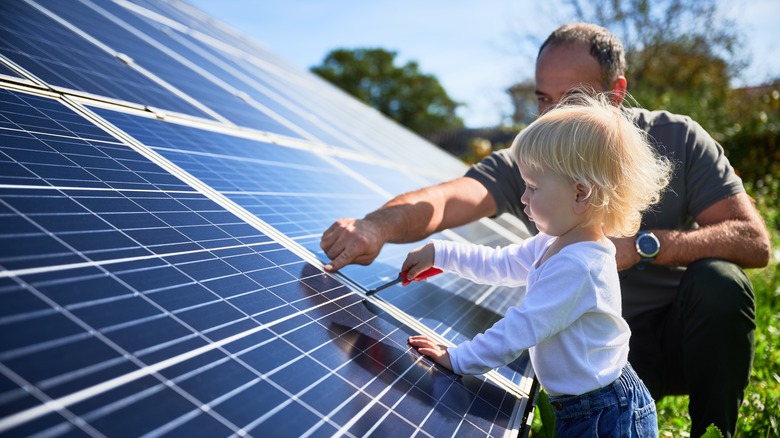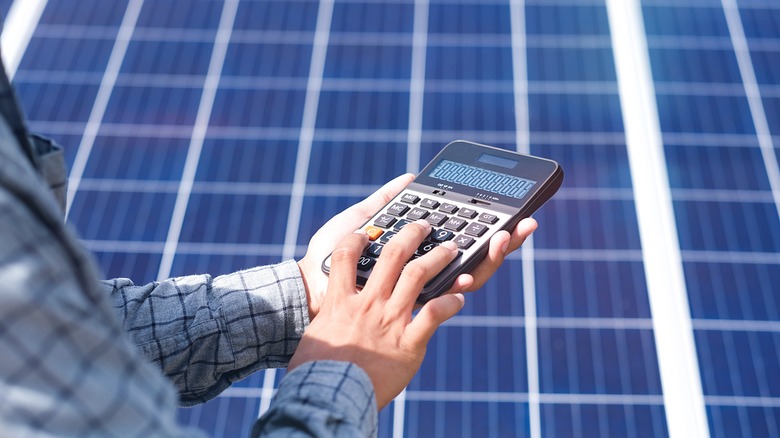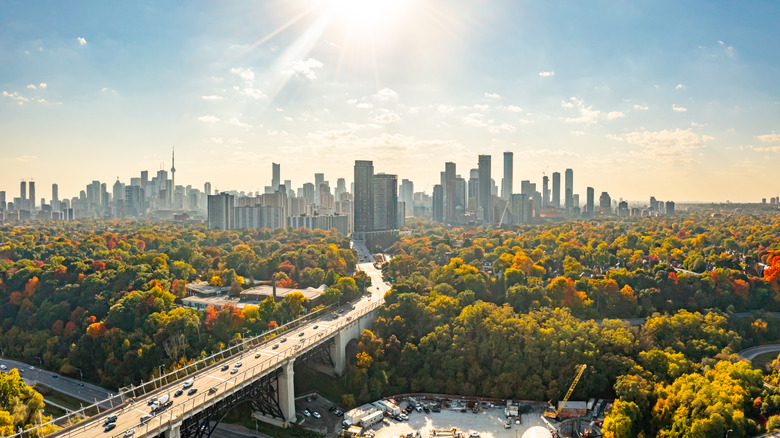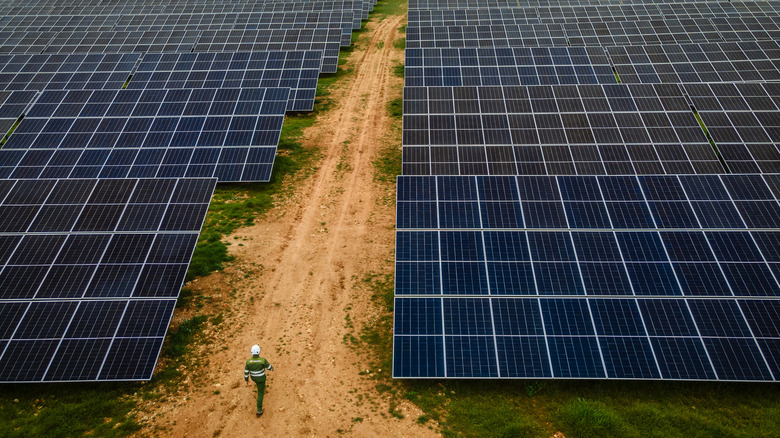3 Reasons Home Solar Panels Might Not Be Worth Installing On Your House
As technology advances and prices increase, everyone is looking for ways to cut corners and save a penny or two. Enter solar panels, which have only continued to rise in popularity with a 10% increase in shipments into the U.S. in 2022 (following a 34% increase between 2020 and 2021), according to the U.S. Energy Information Administration.
Installing solar panels on your home brings a wide array of benefits. Of course, long-term savings on energy bills are the biggest draw, as once you have paid off the solar panels, you practically have access to unlimited, free energy. And home solar panels typically last 25 to 30 years, assuming the panels are kept clean and working their best – ensuring those savings last long-term. According to Action for the Climate Emergency (ACE), other benefits include an increase in home value and a U.S. federal tax credit to help with the installation costs, making an investment in clean energy tech a no-brainer, right? Well, not necessarily.
Although they can help save people money and work toward solving global climate issues, solar panels aren't perfect, and there are a few reasons why home solar panels might not be worth installing on your house. Let's break down some issues that arise with the energy alternative so you can know, once and for all, if solar panels are worth the investment.
Cost
While solar panels will undoubtedly save you money in the long term, you'll have to fork over some serious cash upfront to get your clean energy adventure started. It would be fantastic if everyone could afford home solar panels (not to mention the environmental impact). However, unfortunately, the barrier to entry still requires you to have some financial privilege.
According to Forbes, solar panels cost, on average, about $12,700, or between $8,500 to $30,500 depending on the type and model. Now, this average cost differs from state to state, taking into consideration factors like local power costs and average household energy consumption. So, depending on where you live (within the United States), the upfront cost to install home solar panels could venture on the "cheaper" side. Still, even then, it's not readily available to households struggling to make ends meet. South Dakota is the "cheapest" state for solar panels, with an average cost of $10,192, while Massachusetts "reigns supreme" as the most expensive state at $15,162.
Of course, the company you choose and the model you want to install also affect how much home solar panels could cost you. Either way, the steep upfront cost could stop some households from investing in renewable energy, and there's one crucial factor that plays into the price, which brings us to our second reason why solar panels might not be worth installing.
Location
Like many things in life, it's all about location when it comes to gauging whether home solar panels are worthwhile. Even if you can afford the steep price to install them, you won't get any use out of those solar panels if your home isn't in a suitable area.
While location factors into solar panels' installation cost (you have to own the property they're installed on), it also determines how much sunlight your home solar panels will actually get. Just as you wouldn't move to Miami if you hate the beach, you wouldn't want to install solar panels if you live in the dimly lit forests of Maine. The system relies entirely on solar energy; without it, panels can't produce power, rendering them useless and nothing more than glorified roof decorations. Solar batteries do store energy to help mitigate this factor, holding excess solar power as reserves to ensure functionality continues during cloudy weather. But, if you live in an area with heavy winters, it might be too much for your solar panels to handle.
Naturally, areas far north or south get less sunlight, while places closer to the equator bathe in it. In the U.S., regions like the Pacific Northwest, the Northeast, and Alaska will lack sunlight compared to others, while internationally, some cities in countries such as the United Kingdom, China, and Russia are infamous for their low levels of sun exposure. Chances are that you live in a more moderate area, but whatever your situation may be, consider your local weather and levels of sun exposure before installing home solar panels.
Space constraints
You may not know this, but solar panels are pretty big. According to Solar Energy World, the standard size for one is about 65 inches by 39 inches, or over 5-ft by 3-ft. Of course, sizes will vary depending on the manufacturer, but regardless, you'll need a fair bit of space to install enough solar panels to power your home.
Now, you may think you have plenty of room for a 5-ft by 3-ft solar panel, and you're probably right, but you'll need much more than one solar panel to power your entire home. Energy Sage states that, on average, most homeowners will require between 17 and 25 solar panels to offset their electric bills fully. The exact number will differ based on the household, including factors like energy consumption and sun exposure, but it's pretty easy to see how the required number can quickly add up.
Of course, it also depends on where you choose to install them. Although roofs are a popular spot, the size of your roof instantly limits how many solar panels you can fit on your home — not to mention adding other variables like roof angle and direction for optimal sunlight. Some people use their backyard to house solar panels, but that comes with its own constraints, especially for people living in densely packed neighborhoods. Either way, space constraints are a real reason home solar panels might not be worth the investment.



